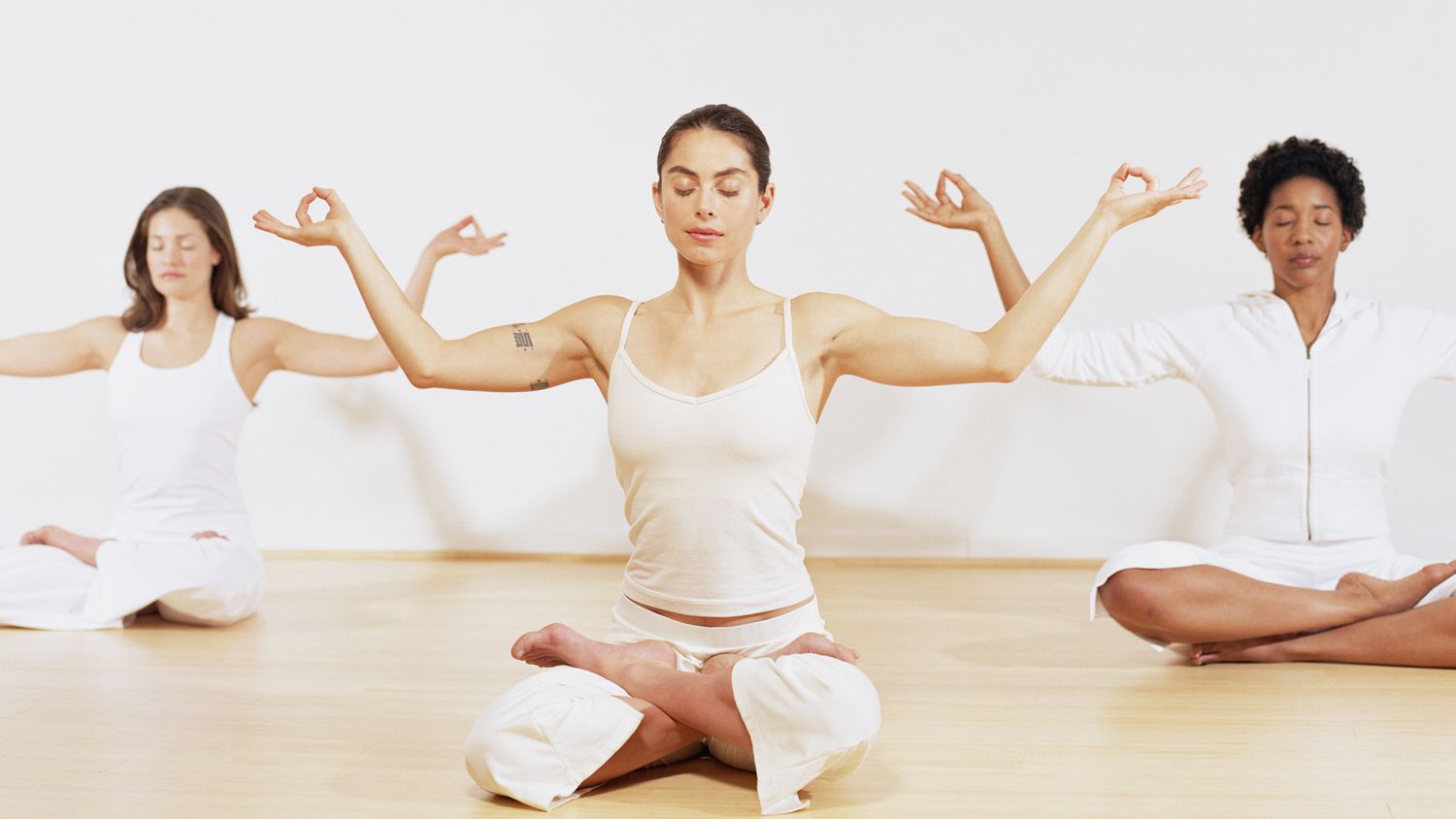Asana has many benefits, and the human brain is no different. Several asanas boost brain power. These include shoulder stands, Padmasana, and Vajrasana. But which ones are the most effective? Find out which ones can improve brain power by practicing them regularly.
Padmasana (Lotus pose asana)
Padmasana is a relaxing, meditative yoga posture that increases the brain’s power of concentration and calmness. It also improves posture, opens the hips, and stretches the pelvis and spine. In addition, it improves memory. To perform it, you should be relaxed and hold the pose for about 30 seconds to a minute.
Before you begin practicing this asanas, you must learn the correct breathing technique and the proper position for the pose. An excellent way to start is practicing hip openers and standing poses, which will warm up the body and mind. While doing these poses, you should focus on the energy flow through your body.

Another yoga pose that increases brain power is the lotus pose. In addition to being comfortable and providing good posture, it also boosts circulation. Increasing the amount of oxygen in the blood improves mental clarity and calms the nervous system. It also increases the amount of gray matter in the frontal cortex, which enhances executive decision-making and working memory.
This asanas also has other benefits, including relieving stress and avoiding negative emotions. It also improves the health of the brain by nourishing it. You can practice this asana for about 20 minutes daily and see results.
Sirsasana
Practicing asanas, such as sirasana, is an excellent way to boost the brain’s power. It can improve memory and decrease mental clutter while relaxing and calming the brain and sympathetic nervous system. This exercise also increases the blood supply to the brain.
In addition to improving brain power, sirsasana also stimulates the lymphatic system.
That enables the body to clear toxins and move garbage more efficiently. It also speeds up the metabolism. The increased blood circulation improves nerve communication, relaxes muscles, and removes knots. The blood flow to the brain enhances the functioning of the nervous system.

When practicing sirsasana, it is best to practice it while the stomach is empty, or at least 3 hours after your last meal. In addition, women should avoid this pose during their menstrual cycle. Also, people with heart problems or spondylitis should consult a qualified yoga instructor before practicing this pose. People with high blood pressure should also be cautious.
If you have never practiced sirsasana, you can try it by leaning against a wall or other support, which will help you get used to it. That will enable you to focus on your practice. Combined with long, steady breathing, it will help improve your mental function.
Vajrasana
The Vajrasana is a very beneficial asanas that can increase your brain power and digestion. In addition, it can reduce your BMI and obesity. The Vajrasana is performed by kneeling or sitting back on your legs. The knees should be at a four-finger distance apart. The thighs should be resting on the calves, and the big toes of both feet should be touching. It should perform the posture with a straight back and gaze, and the chin should be parallel to the ground.
If you suffer knee or foot pain, you should not practice the Vajrasana. It can also be dangerous for people who have severe knee problems. Sitting in the pose can cause excessive pressure on the knees, damaging them. If you are concerned about your knees, you should consult your orthopedic doctor or asana instructor for instructions. This asanas can be beneficial for you if you are looking to improve your brain power and improve your memory.

Vajrasana is also effective for preventing and treating certain psychological disorders. It can reduce stress and hypertension and can even help with depression. It also benefits your spiritual life, allowing you to enter a deep meditative state while performing this posture. The Vajrasana can also help with your sleep by keeping the body relaxed.
Mayurasana (Peacock pose asana)
Mayurasana is an ancient asanas in which people balance their body weight on their hands. This asana is said to help offset the axis of the brain and helps relieve stress. It also strengthens the reproductive system and benefits women suffering from menstrual disorders and problems associated with menopause. Additionally, it helps balance the body’s energy levels and improves sexual activity. It’s also said to be an effective treatment for piles. In addition, this asana stimulates the heart and lungs.
Mayurasana also helps open the third eye and Ajna chakra. They allow more energy to enter the brain and improve mental ability. Practicing correctly can increase brain power by improving digestion and detoxification. Advanced practitioners can hold the posture for as long as a minute.

Mayurasana can also help with gut disorders and purify the blood. It is also beneficial for those who have diabetes or other intestinal problems. To perform this asanas, you must sit on your heels with your knees apart, and your hands facing the body. You should also stretch your legs and belly to ensure a firm and balanced abdominal structure.
To improve your brain power, you must practice brain yoga regularly. These will strengthen your brain and take it to a whole new level. If you practice it for at least 20 minutes a day, you can expect a boost in your productivity. They will also increase your brain’s power and memory.
Halasana
Practicing Halasana is an excellent way to increase brain power and memory. This balancing posture improves the functioning of the central nervous system, which is responsible for processing information. In addition, it improves metabolism and normalizes blood sugar levels. It also improves posture and releases back strain. Research has also shown that it sharpens the mind during times of stress.
The halasana pose helps blood circulation to the brain, which improves memory and helps the brain stay calm. To perform the pose:
- Lie on your back and engage the muscles in your abdomen.
- Lift your legs to a ninety-degree angle, then bend them to a 180-degree angle.
- Hold for about eight to ten seconds.

Halasana is an advanced asana pose that helps the body achieve a restful state. The posture requires flexibility and concentration and can be practiced before bed or during meditation. Ideally, they practiced on an empty stomach in the morning or four to six hours after the last meal. A beginner can practice the pose for a minute or two.
Squatting asana has many benefits. It is known to reduce stress and treat dementia and mild depression. Moreover, it has been found beneficial for attention deficit hyperactivity disorder (ADD), autism, Down’s syndrome, and dyslexia. A guided meditation session can follow the squatting exercise.
Paschimottanasana
Paschimottanasana, or the seated forward bend, is a common asana that targets the hamstrings and belly. The name comes from the Sanskrit language, which means “backstretch.” In addition to relaxing, this pose also stimulates the brain and helps alleviate mild stress and depression. It is also beneficial for women during menopause and can improve digestion.
This easy-to-do asana will help you focus on the task at hand. It also improves memory and concentration. You can begin by standing in a comfortable position. Bend your hips forward and keep your left toe on the right thigh. You should keep your lips closed and inhale while bending forward. Hold the pose for at least 8-10 seconds, or as long as you can comfortably do it.o

Paschimottanasana is also helpful for people with diabetes and hypertension. It would help if you practiced this pose daily, preferably in the morning and on an empty stomach. Eating a light breakfast about four to six hours before practicing this pose will improve your energy. It is also advisable to place both legs out in front of the yoga mat. Make sure your spine is straight, and breathe deeply while performing the pose.
Performing this asana is not easy and requires some practice. If you have limited flexibility, it is a good idea to start with more accessible poses before progressing to Paschimottanasana. They will allow you to feel more comfortable and prepare you for Paschimottanasana.
Padangusthasana (Big-Toe-Pose asana)
Practicing asana in the form of the asana Padangusthasana is said to increase the brain’s power and ability to make quick decisions in scarce situations. Human brains are busy and have many responsibilities, so taking care of them this way will help them be more alert and ready to act in an emergency. Blood flows to the brain during this pose, which keeps it fresh and healthy.
Practicing this posture is also said to improve the digestive system. It helps your bowels function correctly and strengthen them, preventing digestive problems. It also allows you to relieve stress and improve your mental focus. You can start practicing this asana with your hands on your hips, then draw your left knee toward your belly. Once you’ve found the proper position, extend your foot whenever you feel comfortable.

The asana requires a lot of work on your feet. Many new practitioners tend to cramp their toes and overwork their plantar fascia. Learning how to work your feet correctly will allow you to stay balanced in the pose and prevent overworking your plantar fascia. Additionally, by maintaining a soft belly, you can create more release in the lumbar spine and direct the prana assist to the most compressed part of the posture. It will also allow more space in the front hip joint.
In addition to practicing yoga, plow pose is also an effective brain exercise. It helps the mind stay calm and focused and improves the brain’s memory. This ancient practice is a great way to maintain the health of your brain. You should do it every day for at least 20 minutes.








